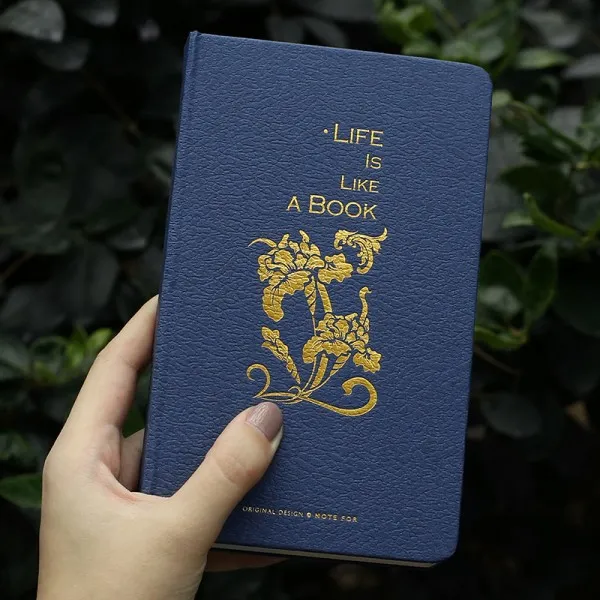
Request A Quote


Debossing, also known as blind embossing, is a popular method to personalize notebooks. This technique involves recessing relief images and designs into materials. The debossed appearance is achieved by applying heat and pressure to a brass piece milled with a design, using a die-stamp.
Many premium brand notebooks, such as Moleskine or Leuchtturm1917, use debossing to showcase their brand logo on their covers, adding a touch of sophistication and professionalism.

custom debossed notebook
Screen printing, often called silk screening or silk screen printing involves utilizing a mesh screen, ink, and a squeegee to imprint a stencilled image onto a surface (a rubber blade).

notebook screen printing effect
Foil printing, also known as foil blocking, is a technique that adds a metallic finish to leather and synthetic materials, enhancing the notebook's aesthetics. Unlike debossing, foil printing transfers the design using heat, resulting in a less profound impact.
Foil printing is often seen on high-end business notebooks or invitations, adding a touch of luxury and finesse.

gold foil notebook
Die-Cutting uses a steel-cutting die to craft unique shapes from materials, offering a distinctive touch to notebooks. This method can be used to create the main shape or to add decorative patterns to a larger piece.
Many children's notebooks utilize die-cut printing to create fun shapes and windows, making the notebooks more appealing to the younger audience.

Die Cut Printing Notebook
CMYK printing uses four primary ink colors: Cyan, Magenta, Yellow, and Key (Black). These colors combine in various ways to produce a wide spectrum of hues. The "key" or black ink adds depth and shadowing to the final image.
Almost all colored magazines and books utilize CMYK printing due to its ability to accurately reproduce thousands of colors.

Lamination printing enhances the durability and texture of materials, giving them a smooth finish. It involves applying a film or liquid that, once dried, provides a protective glossy, matte, or satin finish.
Many school and office supply notebooks adopt lamination printing to protect their covers from wear and moisture.

Thermography printing is a technique that produces raised prints similar to engraving. It involves mixing a specific powder with ink, which, when heated, creates a raised effect on the paper.
Thermography is often employed for crafting formal business cards or invitations, offering a raised print that exudes professionalism.

Source: rockdesign.com